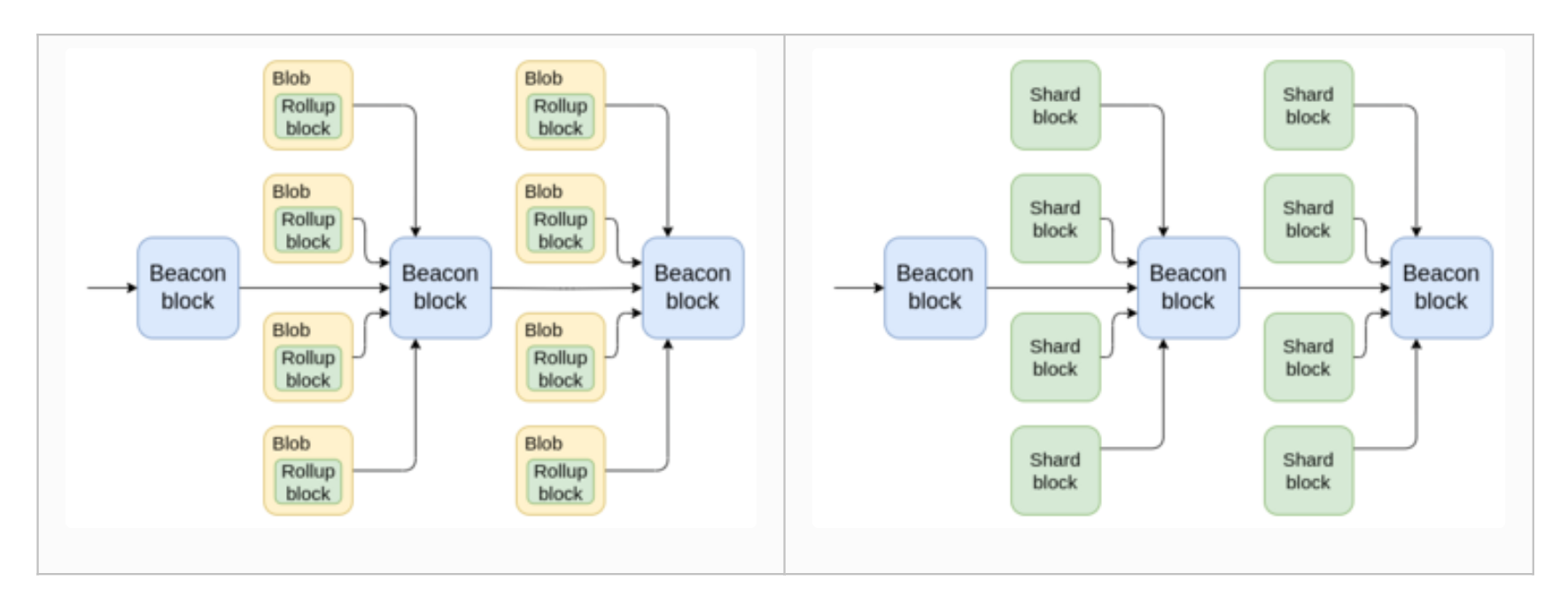Today,  Ethereum L1Ethereum is the largest smart contact blockchain platform with an expensive decentralized ecosystem.View Profile” class=”stubHighlight”>Ethereum founder
Ethereum L1Ethereum is the largest smart contact blockchain platform with an expensive decentralized ecosystem.View Profile” class=”stubHighlight”>Ethereum founder  Vitalik Buterin GuestVitalik Buterin is the Co-founder of Ethereum.View Profile” class=”stubHighlight”>Vitalik Buterin released an analysis of Layer 2s (L2s) and base layer execution sharding in scaling Ethereum, highlighting the key similarities and differences in these approaches.
Vitalik Buterin GuestVitalik Buterin is the Co-founder of Ethereum.View Profile” class=”stubHighlight”>Vitalik Buterin released an analysis of Layer 2s (L2s) and base layer execution sharding in scaling Ethereum, highlighting the key similarities and differences in these approaches.
What’s the context?
In his new post, Buterin explored the parallels between L2s and sharding, noting how these approaches similarly aim to handle a large volume of transactions efficiently.

He emphasized that the endgame for both these methods is relying on ZK-SNARKs for computation verification and Data Availability Sampling (DAS) for data verification. Despite these similarities, he went on to explain how there are distinct differences that persist.
Summarizing the tradeoffs
- As Vitalik noted, L2s provide a variety of execution environments, allowing for different virtual machines and architectures, such as Arbitrum Stylus (WASM-based), Fuel (UTXO-based), and Aztec (ZK-SNARK-based privacy).
- This diversity enables specialized implementations that wouldn’t be feasible with the single, monolithic Ethereum Virtual Machine (EVM) that sharding would be limited by.
- Additionally, the Ethereum L1 offers more robust security guarantees at a higher cost, while L2s offer a spectrum of security and cost tradeoffs, making them suitable for non-financial applications like social media and gaming.
- L2s can also provide faster transaction times using preconfirmation mechanisms, a feature that would complicate L1 if implemented directly. On the flip side, L2 cross-chain capabilities still need work.
- Culturally speaking, L2s also foster independent sub-ecosystems within Ethereum to an extent that shards likely wouldn’t. This encourages innovation and specialization while benefiting from Ethereum’s shared security and network effects.
- In the same vein, rollups allow developers to experiment with new ideas without needing consensus from Ethereum core developers, reducing the political overhead associated with L1 changes.
Vitalik’s conclusion
Buterin wrapped up by reiterating that while L2s and sharding have their idiosyncracies and are often seen as distinct scaling strategies, they are fundamentally similar in their general technical approaches.
The main difference, he noted, lies in who builds and maintains these components and the level of autonomy they possess. He concluded by emphasizing the need for addressing the coordination challenges of an L2-centric approach to fully realize its potential.
Bankless take:
Some people in the Ethereum community still long for the original sharding vision, though as Vitalik’s new post demonstrates, Ethereum has taken an approach via L2s that, in effect, is sharding–it’s just arrived along a different path than was initially planned. While pure sharding has its pros, the flexibility possible with rollups is a big leg up and highlights how Ethereum is now well-suited for development efforts of all stripes.
Read More: www.bankless.com









 Bitcoin
Bitcoin  Ethereum
Ethereum  Tether
Tether  XRP
XRP  Solana
Solana  USDC
USDC  Dogecoin
Dogecoin  Cardano
Cardano  TRON
TRON  Lido Staked Ether
Lido Staked Ether  Wrapped Bitcoin
Wrapped Bitcoin  Sui
Sui  Hyperliquid
Hyperliquid  Wrapped stETH
Wrapped stETH  Chainlink
Chainlink  Avalanche
Avalanche  Stellar
Stellar  Toncoin
Toncoin  LEO Token
LEO Token  Shiba Inu
Shiba Inu  Bitcoin Cash
Bitcoin Cash  Hedera
Hedera  Litecoin
Litecoin  WETH
WETH  USDS
USDS  Polkadot
Polkadot  Monero
Monero  Wrapped eETH
Wrapped eETH  Bitget Token
Bitget Token  Binance Bridged USDT (BNB Smart Chain)
Binance Bridged USDT (BNB Smart Chain)  Pepe
Pepe  Pi Network
Pi Network  Ethena USDe
Ethena USDe  Coinbase Wrapped BTC
Coinbase Wrapped BTC  WhiteBIT Coin
WhiteBIT Coin  Uniswap
Uniswap  Aave
Aave  Bittensor
Bittensor  Dai
Dai  NEAR Protocol
NEAR Protocol  Aptos
Aptos  OKB
OKB  Jito Staked SOL
Jito Staked SOL  Tokenize Xchange
Tokenize Xchange  BlackRock USD Institutional Digital Liquidity Fund
BlackRock USD Institutional Digital Liquidity Fund  Ondo
Ondo  Cronos
Cronos  Internet Computer
Internet Computer  Ethena Staked USDe
Ethena Staked USDe